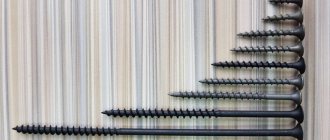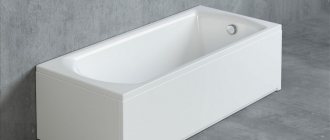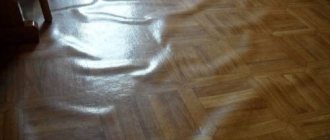SMD LEDs - what are they?
LED SMD – surface mount LED lamps. Their main difference from conventional diodes is the installation method, which determines the design features. The standard output version has long leads for installing the lamp through holes in the board. An SMD device has only contact pads - planer leads, so the product is attached directly to the board. This method is called surface mounting. Installation of diodes is very simple and can be done by a non-specialist.
This solution has another significant advantage. The characteristics of SMD LEDs include high light output with low electricity consumption. However, the realization of this advantage requires very good heat dissipation. Massive short leads are more efficient and dissipate heat better. In addition, the diode practically sits on the board and transfers heat to it.
SMD LEDs are more resistant to vibrations and mechanical damage due to their tighter fit.
What is LED
An LED is a solid-state electrical source of artificial light made from p- and n-conductivity semiconductor materials. Using several technologies - sputtering through masks, etching, epitaxial deposition, etc., a pn junction is obtained.
In a p-type semiconductor material, the current carriers are “holes” - atoms of the semiconductor crystal, in which doping with special metals creates a shortage of electrons. In n-materials, the carriers are the excess electrons in the crystal.
The “hole” is virtually motionless. It has a positive charge equal to the charge of an electron. An electron, “jumping” from the outer orbit of one atom to the outer orbit of a neighboring one, moves the “hole” in the opposite direction.
Explanation of SMD LED markings
LED brands are designated in order to make their use more convenient. Only 4 digits are used for this, so it’s not difficult to “unravel” the designation.
Devices are classified by size, and the marking essentially indicates the size of the product. The numbers indicate the length and width in millimeters. For example, model 3528 has dimensions of 3.5 * 2.8 mm. Other information about the device can be obtained from the instructions.
Important! It is useful to study the instructions, since many Chinese manufacturers install lower-power chips in a typical case. At the same time, it is easy to purchase an LED with a power of 0.1 W instead of 1 W.
SMD LED Dimensions
The standard sizes of SMD LEDs to some extent determine the parameters of the product. There are many types of them, but the following 6 are among the most popular.
| Type | Dimensions, mm | Number of crystals | Power, W | Luminous flux, Lm | Current, mA | Operating temperature, C |
| 3528 | 3,5*2,8 | 1, 3 | 0,06, 0,2 | 0,6–5,0 | 20 | -40 — +85 |
| 5050 | 5,0*1,6 | 3, 4 | 0.2 or 0.26 | 2–14 | 60 or 80 | -20 — +60 |
| 5630 | 5,6*3,0 | 1 | 0,5 | 57 | 150 | -25 — +85 |
| 5730 | 5,7*3,0 | 1, 2 | 0.5 or 1 | 50 or 158 | 150 or 300 | -40 — +65 |
| 3014 | 3,0*1,4 | 1 | 0,12 | 9–11 | 30 | -40 — +85 |
| 2835 | 2,8*3,5 | 1 | 0,2, 0,5, 1 | 20, 50, 100 | 60, 150, 300 | -40 — +85 |
The table includes only the basic parameters, but allows you to compare the luminous flux and power of the device.
Important! The power of the luminous flux depends on the color of the LED.
In addition to those listed, they also produce a variety of 3 and 6 volt LEDs, which are used to backlight LED TVs, computer monitors, tablets, and smartphones.
LED Voltage Table
In order for an LED to provide all the characteristics specified by its design and manufacturing technology during operation, it needs to be provided with a rated power supply. For example, apply a voltage to its anode and cathode that will be slightly greater than the forward voltage of the pn junction. Excess voltage should be “extinguished” by a resistor connected in series. The resistor is called current limiting. It serves to prevent excess current through the pn junction.
Table. Forward voltage of the pn junction of a color LED.
| Glow color | Operating voltage, direct, V |
| white | 3,5 |
| red | 1,63–2,03 |
| orange | 2,03–2,1 |
| yellow | 2,1–2,18 |
| green | 1,9–4,0 |
| blue | 2,48–3,7 |
| violet | 2,76–4 |
| infrared | up to 1.9 |
| UV | 3,1–4,4 |
Powerful LEDs, their characteristics
Powerful LEDs based on COB matrices. Large models have mounting holes in the corners of the case. Small models are attached by soldering to a printed circuit board.
In addition to the usual LED characteristics, high-power models add several additional characteristics:
- rated power, W;
- chip size, mm;
- rated operating current of the crystal or matrix;
- service life associated with standards L 70, L80, etc.
Low power LEDs
In terms of power consumption, these are LEDs from 0.05 to 0.5 W, operating current - 20-60 mA (medium power - 0.5-3 W, current 0.1-0.7 A, high - more than 3 W , current 1 A or more).
Structurally, low-power LEDs include several groups of LED light emitters:
- LEDs in SMD housings are regular and ultra-bright;
- diodes of the DIP type in cylindrical housings - for installation in holes of printed circuit boards;
- in piranha type housings – for mounting in holes.
Low-power LEDs in different housings.
The picture shows the LEDs from top to bottom:
- In cylindrical DIP-type packages - with flexible wire leads for soldering into board holes.
- In piranha type cases, also known as Superflux, soldering into holes.
- In packages with planar leads for mounting on contact pads of single- and double-sided printed circuit boards or in “wells” of multilayer boards.
Characteristics of SMD LEDs
Each type of SMD LED is characterized not only by the amount of radiation and the amount of current consumed, but also by other parameters. The type of product determines the application of the device and installation features.
3528 LED Specifications
As can be seen from the table, the SMD 3528 LED can be single-chip or triple-chip. In the first case, it can generate white neutral and warm light, as well as yellow, blue, green and red. In the second, it serves several flowers at once. The single-chip version is equipped with 2 terminals for connection, and the three-chip version is equipped with 4 (1 cathode and 3 anodes). To prevent environmental influences, the crystals are filled with a transparent compound. The material may include a phosphor: this is how the color parameters of the device are equalized.
The luminous flux that the device emits is small. But SMD 3528 has miniature dimensions and regenerates different colors. Due to this, LEDs are used in lighting strips and inexpensive decorative lamps.
5050 LED Specifications
The SMD 5050 LED can include 3 or 4 crystals. For a single-color lamp, crystals of the same or similar shade are chosen. 5050 has a higher brightness - 3 times more than 3528. The diodes provide the same protection: a transparent compound or phosphor.
The device has the best power-to-price ratio and provides any color of light output. As a rule, 5050 is installed on decorative lighting strips - single-channel, RGB, RGBW. If you increase the mounting density - up to 60 pieces per 1 m, the LED strip can be used not only as decoration, but also to illuminate interior elements. The strips are equipped with controllers that allow you to adjust the shade and intensity of the light.
5630 LED Specifications
Element 5630 has only a single-chip design, but is distinguished by high power: it generates a luminous flux of 57 lumens. The color is white, with different temperatures: cold, daytime, warm. The device is protected by 2 antistasors and can withstand a current pulse of up to 400 mA.
The LED has 4 pins, but only 2 provide operation of the element. The other 2, together with the substrate, are required for heat removal. Diodes are used in the manufacture of powerful lamps and spotlights.
Important! The brightness of the diode depends on the air temperature. At +85 degrees the indicator drops by 25%.
5730 LED Specifications
The single-chip version has the same power as the 5630, but the three-chip SMD LED 5730 is three times more powerful: it produces light with a brightness of up to 158 lumens. Also designed to produce a white luminous flux, but with different color temperatures.
The modification has a very low thermal resistance, which makes it possible to do without two additional pins, as in the 5630. At the same time, it can also withstand pulse current.
The element is characterized by high performance and is used in the same way as 5630 - in the production of high-power LED lamps.
Characteristics of LED 3014
Single-chip element of moderate power - up to 11 lumens, and very small sizes. A compound is used as protection. The LED produces white light - warm, cool, primary colors, as well as orange. This relatively recently appeared modification is classified as low-current.
When installing the product, you need to take into account its peculiarity: its leads are atypically long and reach the bottom of the case. Thus, heat dissipation is improved.
The main purpose of 3014 is modules and strips of decorative lighting. Diodes are often used in the production of automobile lamps and tabletop devices.
2835 LED Specifications
Of all types of SMD LEDs, this model is the most powerful: it emits about 20% more light than 5730. This can reduce power consumption. The single-chip device is produced in three versions of different power. It emits white light of different temperatures. It is similar in size to element 3528, but has a round lens.
This option is the most popular, as it is used in the manufacture of literally any lighting fixtures: outdoor lamps, spotlights, household LED lamps. And this means a large number of fakes, where instead of a one-watt diode they install an element of lower power.
Main characteristics of LEDs
First, let's briefly tell you what an LED is. This is a device that emits light due to the semiconductor properties of the materials used in its manufacture.
To choose the right LED device, you need to consider a number of characteristics:
- supply voltage value;
- dimensions;
- power;
- radiation angle;
- device degradation period;
- light output;
- number of pins;
- Colorful temperature.
On-chip current
The standard current for an LED is 0.02 Ampere. However, there are also devices capable of operating with a power of 0.08 A. This effect is achieved by placing 4 semiconductor crystals under one housing. Since each crystal individually operates with a low power of 0.02 Ampere, a device with 4 crystals will consume 0.08 A.
In order for an LED to work correctly, it is necessary to supply it with a current of uniform magnitude. Even if you slightly increase the strength of the incoming current, the intensity of the radiation will noticeably decrease. This means that the crystal is “aging”, that is, it is gradually wearing out and may soon fail.
In this case, the color temperature will increase, which will lead to the element slowly overheating. As a result, a gradual change in the color of the lighting will begin. It will shift to the blue part of the spectrum, and the device itself will fail prematurely.
If you apply a current significantly higher than required, the LED will not withstand the load very quickly. This will lead to almost immediate burnout of the lighting fixture.
Voltage
The expression “supply voltage” cannot be applied to diodes. To describe the properties of a device, you should use the “voltage drop” characteristic. It describes what voltage is generated in the LED when a rated electric current is passed through it.
On the packaging of LED devices, in the “voltage” column, this particular characteristic is indicated. Knowing it, you can deduce what voltage remains on the crystal. It is taken into account in various calculations.
Different types of semiconductors can be used to make LEDs. The voltage will also vary depending on the type of material used. You can determine its approximate value by paying attention to the color of the crystal. A semiconductor glows white, green, or blue when its voltage is approximately 3 volts. At the same time, the voltage in the red and yellow crystals will be less. It will be from 1.8 to 2.4 Volts.
Parallel connection of devices with the same rating, at a voltage of 2 Volts, can damage the LEDs. This occurs due to the scattering of parameters. If you increase the voltage by just 0.1 Volt, the current on the LED will increase by 1.5 times. As a result, some of the LEDs will burn out. The remaining appliances will begin to work too dimly and unevenly. Therefore, the LED rating must always match the amount of current passing through the device. For example, for flashlights the supply voltage should not be more than 3.6-3.7 V.
Diode resistance
The diode's own forward resistance is extremely low. To cope with sudden power surges in the network and adapt the device to different connection sources, methods are used to limit current consumption. Current stabilizers and unique drivers are built into LED devices. Their task is to convert electric current. They bring it to the required value.
If you need to connect only one LED to the network, it is better to do this using a current-limiting resistor. To choose the right resistor, you need to determine which device with what resistance is suitable in this particular case. The calculation is based on the characteristics of the LED. You can use an online calculator to carry out calculations.
Light output and beam angle
If you need to compare the characteristics of lighting devices with each other, you should take into account the radiation strength. Diodes emit from 1 to 5 lumens of light with a device diameter of 5 mm. At the same time, an incandescent lamp with a power of 100 watts can emit a luminous flux of 1000 lumens.
However, an incandescent lamp emits diffused light into space. In contrast, the radiation from an LED is always directional. Each device has a specific dispersion angle.
Scattering angles can vary from 20 to 120 degrees. The brightest light comes from the center of the device. The illumination level decreases as it approaches the boundaries of the scattering angle.
Based on these properties, the design of the lighting source is selected taking into account the following characteristics:
- LEDs are used for directional lighting of a specific place/object. Lamps using LED technology consume little power, so they are beneficial to use in a wide variety of areas.
- To cover a large space with light, diffuse lenses are included in the design of the lighting fixture.
Color temperature – comfort of light flux perception
The glow temperature is measured in degrees Kelvin. Lighting devices are divided into classes, depending on the temperature of the light and its color characteristics.
Application of SMD LEDs
LED lamps are used so widely that it is impossible to list all areas of application.
Most often, devices of this kind are found in the following products:
- pocket and tactical flashlights - 6 volt LED lamps are installed here;
- lamps and turn signals on cars;
- household lighting products of various types;
- decorative lighting, mounted both inside and outside the building, uses crystals that generate different colors;
- signs, indicators, traffic lights, billboards;
- SMD LEDs are extremely popular in landscape design; the elements are not afraid of vibration and low temperature, which allows you to organize the most interesting lighting options;
- Low-current modifications are actively used for indication.
In each case, diodes of the required power are selected. In this case, the color of the light flux is taken into account.
Applications of LEDs
Due to their wide range of advantages, LED light sources have found applications in a variety of areas. The main areas of LED use are:
- Historically, the first area of application for LEDs was instrumentation. It was here that LEDs began to be widely used as display devices. Indicators can be either single LEDs (for example, a power-on indicator) or collected into various displays (numeric, alphanumeric).
- In recent decades, so-called LED clusters have become widely used. Essentially, this is an array of LEDs under common digital (usually) control. The average person is familiar with such clusters in the form of tickers and large screens placed on city streets.
- LEDs also provide backlighting for LCD screens of mobile devices, televisions and monitors of personal computers and laptops.
- Powerful and ultra-high-power LEDs have found their application in street lighting lamps, as well as in modern traffic lights. The use of LED emitters in traffic lights in large cities not only helps to optimize energy consumption, but also, due to their high light output and color rendering, helps reduce accidents on the roads.
- The introduction of fundamentally new elements of the road environment: road signs based on LEDs also contributes to improving road safety. Such signs are perfectly visible at any time of the day and in almost any weather.
- In recent years, LEDs have become widespread as the main sources of industrial and household lighting. LED-based lamps, as well as LED strips, are confidently displacing other types of light sources from the market. First of all, this is due to the recent avalanche-like decline in prices for LEDs, as well as due to the emergence of many local manufacturers of fairly high-quality LED products.
- The use of LED technologies in plant growing makes it possible to create highly specialized lighting sources (phytolamps) with a special radiation spectrum that ensures maximum efficiency of the photosynthesis process in the leaves of agricultural plants. The use of such devices is especially promising in areas with a northern climate.
- The rapid development of information technology also causes significant demand for LED products. The use of LEDs as easily accessible sources of modulated electromagnetic radiation is widespread in the creation of information transmission systems via optical fibers.
- LEDs have also found their niche in the design field in the form of colored LED strips, flexible duralight cords, and LED garlands. With their help, both the interiors of residential premises and architectural and art objects, as well as concert and exhibition halls, bars, discos, and night clubs are decorated.
- The cheapness and charming appeal of LEDs has led to their widespread use in toys, children's games, and various USB devices.
- Less known, but no less widespread, is the use of LEDs in optocouplers, which make it possible to create a variety of presence detectors, discrete speedometers, start and end detectors, as well as signal transmission devices without transmitting electrical voltage.
Design and designation of an optocoupler (optocoupler)
Connection requirements
You can install diodes on any surface: on a concrete ceiling covered with wallpaper, on a plastic panel, next to tension films. Thanks to good heat dissipation, the possibility of damaging the material is eliminated. But although the installation of devices is very simple compared to output devices, installation requires the implementation of several recommendations:
- to connect the product to a power source, you need to use a driver, otherwise the LED may fail or operate incorrectly;
- if only 1 resistor is used, the elements should be connected in series to avoid variations in parameters;
- It is forbidden to connect diodes with different operating current values in series, in this case some of the elements will glow dimly;
- if the current is too high, the LED overheats and burns out; accordingly, it is permissible to install a resistor only with sufficient resistance.
If you plan to install garden lighting, you should choose products that are protected from moisture and dust.











